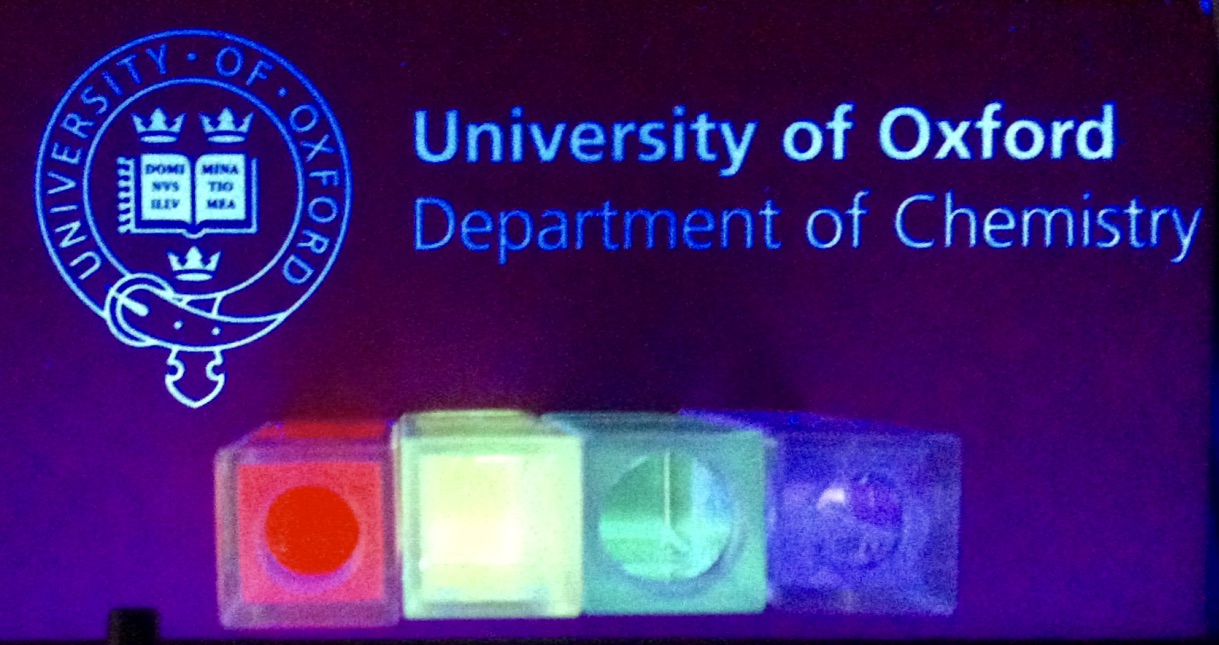Research within the Faulkner group centres on five themes:
- Defining a new chemical toolkit through an understanding of the behaviour of labile species in solution and enabling chemical scientists to use the whole of the periodic table to address medical problems.
- Understanding where the molecule ends; and thus establishing the role of weak interactions and solvent structure in determining the properties of molecular and biological systems.
- Developing smart spectroscopic and imaging techniques that can be used on scales from the molecule to man, and developing appropriate probe molecules.
- Understanding and controlling the fundamental properties of open shell lanthanide complexes, with particular reference to the role of magnetic anisotropy in determining the behaviour of lanthanide ground and excited states.
- Controlling and exploiting self-assembly of therapeutic and diagnostic agents in vivo; and using such systems to optimize transport of such agents to target sites and obviate the possibility of excretion occurring more quickly than localization at the target.
Synthetic Chemistry

Our synthetic approach to making metal complexes and arrays is defined by the need to work under kinetic control if we are to prepare more complicated architectures.We do this by using kinetically stable complexes as substrates in organic reactions, or in supramolecular and coordination chemistry.
Our group has pioneered the controlled synthesis of heterometallic lanthanide complexes- i.e. complexes that contain different kinds of lanthanide ions. We use kinetically stable lanthanide-containing building blocks to make multi-metallic structures. This can be done in a variety of ways, such as
- preparing amides by peptide coupling methodologies
- using multi-component reactions such as the Ugi reaction
- using Click chemistry to link azide and propargyl pendent groups together
Imaging and Spectroscopy

We have spent many years studying the luminescence from metal complexes, and are particularly interested in the way in which energy is transferred from a sensitiser to the emissive state, and in the way in which transient spectroscopy can be used to probe and rationalise reactivity.
We have developed techniques for time-gated imaging and lifetime mapping, allowing us to image very low concentrations of imaging agent, and allow parallel processing (i.e., the simultaneous detection of a variety of probes). Long-lived luminescence can be separated from background signals by time-gating, allowing very low concentrations of probe complexes to be detected(at concentrations <10-15 M).
Targeting vector conjugates can also be used in imaging. The tetrapeptide tuftsin (ThrLysProArg) is specifically internalised by activated macrophages, and tuftsin conjugates with Gd3+ complexes can be used as MRI contrast agents to image inflammation. Polymetallic complexes incorporating a component which has long lived luminescence as well as one or more gadolinium ions for MRI can be used for imaging by both techniques, circumventing problems with differences in biodisctribution between luminescent and MRI probes.
Exploiting Anisotropy

Contrary to popular belief, the ligand field can have a dramatic effect on the behaviour of lanthanide complexes. We have shown how changes to the ligand donor set can have profound influence on the spectroscopic behaviour of lanthanide complexes- changing the form of the spectra (and even reversing the order of the peaks in their NMR spectra). We have been exploring these effects through coordination chemistry and supramolecular chemistry, showing that the magnetic anisotropy at the lanthanide centre can be defined by small changes in the donor set, through controlling the energy and Boltzmann population of the mj states within the ground and excited state manifold.
